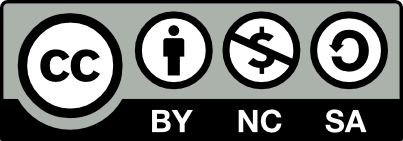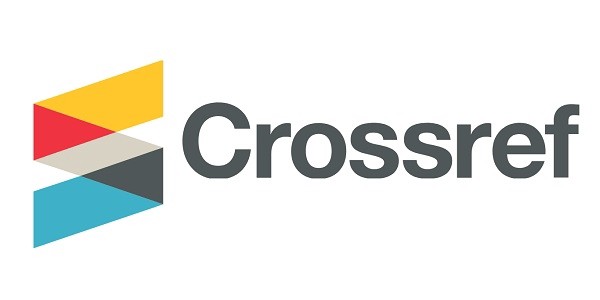99mTc-AgNPs-ICG: nanoparticle for hybrid image
DOI:
https://doi.org/10.35954/SM2024.43.1.5.e302Palabras clave:
Compuestos de Plata, Lidofenina de Tecnecio Tc 99m, Nanopartículas del Metal, Pertecnetato de Sodio Tc 99m, Verde de Indocianina.Resumen
Introducción: actualmente la nanotecnología ha cambiado radicalmente el diagnóstico de muchas patologías humanas. El objetivo de este trabajo es obtener nanopartículas de plata para imagen híbrida (99mTc-AgNPs-ICG) que tengan potenciales aplicaciones clínicas en imagen.
Materiales y métodos: se mezclaron 2 ml de ácido ascórbico (1,7x10-4 M), 5 mCi de 99mTcO4- , 2 ml de ácido cítrico (8,0x10-4 M) y 0,5 ml de nitrato de plata (2,5x10-3 M). El pH de la solución fue 5, y se agitó durante 20 minutos a 37º C. A continuación, se añadieron 2 µl de verde de indocianina (1,3x10-3 M) (99mTc-AgNPs-ICG). Las propiedades fisicoquímicas de la solución se caracterizaron mediante UV (λ1 = 420 nm, λ2 = 254 nm) y detector gamma. Se evaluaron la imagen de fluorescencia, el tamaño de las partículas y el espectro IR.
Resultados: se obtuvieron nanopartículas de plata en solución acuosa a un pH de 5. Su pH, color y espectro fueron estables durante siete días. Además, el pico principal caracterizado por HPLC, UV y detector Gamma tenía tiempos de retención similares. Su espectro UV mostró una banda de absorción de 420 nm, que corresponde a la banda de absorción plasmónica de estas nanopartículas. El tamaño de las partículas era de 46 nm ± 1,5 nm. El espectro IR mostró bandas de absorción en 3193, 2624, 1596 y 1212 cm-1.
Conclusiones: describimos por primera vez en la literatura la síntesis de nanopartículas de plata híbridas (radioctivas y fluorescentes). Se caracterizaron sus propiedades fisicoquímicas, siendo estables y su etiquetado fue reproducible teniendo potenciales aplicaciones biomédicas.
Recibido para revisión: noviembre 2023.
Aceptado para publicación: febrero de 2024.
Correspondencia: Centro de Investigaciones Nucleares, Facultad de Ciencias, Universidad de la República, Montevideo, Uruguay. Mataojo 2055, P.O. 11400, Montevideo, Uruguay. Tel: (+5982) 5250901/108; fax: (+5982) 5250895.
E-mail de contacto: pabloc7@gmail.com
Este artículo fue aprobado por el Comité Editorial.
Descargas
Métricas
Citas
(1) Burdușel AC, Gherasim O, Grumezescu AM, Mogoantă L, Ficai A, et al. Applications of Silver Nanoparticles: An Up-to-Date Overview. Nanomaterials (Basel) 2018 Sep; 8(9):681. DOI: 10.3390/nano8090681. DOI: https://doi.org/10.3390/nano8090681
(2) Clement JL, Jarrett PS. Antibacterial Silver. Met Based Drugs 1994; 1(5-6):467-482. DOI: 10.1155/MBD.1994.467. DOI: https://doi.org/10.1155/MBD.1994.467
(3) Saji VS, Choe HC, Young KWK. Nanotechnology in biomedical applications—a review. Int J Nano Biomater 2010; 3:119-139. DOI: 10.1504/IJNBM.2010.037801. DOI: https://doi.org/10.1504/IJNBM.2010.037801
(4) Heiligtag FJ, Niederberger M. The fascinating world of nanoparticle research. Mater Today 2013; 16:262-271. DOI: 10.1016/j.mattod.2013.07.004. DOI: https://doi.org/10.1016/j.mattod.2013.07.004
(5) Syafiuddin A, Salmiati Salim MR, Kueh ABH, Hadibarata T, Nur H. A Review of silver nanoparticles: Research trends, global consumption, synthesis, properties, and future Challenges. J Clin Chem Soc 2017; 64:732-756. DOI: 10.1002/jccs.201700067. DOI: https://doi.org/10.1002/jccs.201700067
(6) Zhang XF, Liu ZG, Shen W, Gurunathan S. Silver Nanoparticles: Synthesis, Characterization, Properties, Applications, and Therapeutic Approaches. Int J Mol Sci 2016 Sep 13; 17(9):piiE1534. DOI: 10.3390/ijms17091534.
(7) Rao CNR, Müller A, Cheetham AK. Nanomaterials – An Introduction. Cap. 1, p.1-11. https://doi.org/10.1002/352760247X.ch1. Sastry M. Moving Nanoparticles Around: Phase-Transfer Processes in Nanomaterials Synthesis. Cap.3, p.31-50. https://doi.org/10.1002/352760247X.ch3. In: Rao CNR, Müller A, Cheetham AK (Eds.). The Chemistry of Nanomaterials. Synthesis, Properties and ApplicationsWeinheim : Wiley-VCH Verlag GmbH & Co. KGaA, 2004.
(8) Ouay BL, Stellacci F. Antibacterial activity of silver nanoparticles: A surface science insight. Nano Today 2015; 10:339-354. DOI: 10.1016/j.nantod.2015.04.002. DOI: https://doi.org/10.1016/j.nantod.2015.04.002
(9) Mie G. Beiträge zur Optik trüber Medien, speziell kolloidaler Metallösungen. Annalen der Physik 1908; 330(3):377-445. DOI: 10.1002/andp.19083300302. DOI: https://doi.org/10.1002/andp.19083300302
(10) Zhang XF, Liu ZG, Shen W, Gurunathan S. Silver nanoparticles: Synthesis, characterization, properties, applications, and therapeutic approaches. Int J Mol Sci 2016; 17:1534. DOI: 10.3390/ijms17091534. DOI: https://doi.org/10.3390/ijms17091534
(11) Ghosh R, Girigoswami K. NADH dehydrogenase subunits are overexpressed in cells exposed repeatedly to H2O2. Mutat Res 2008; 638(1-2):210-215. DOI: 10.1016/j.mrfmmm.2007.08.008 DOI: https://doi.org/10.1016/j.mrfmmm.2007.08.008
(12) Asharani PV, Hande MP, Valiyaveettil S. Anti-proliferative activity of silver nanoparticles. BMC Cell Biol 2009; 10:65. Published 2009 Sep 17. DOI: 10.1186/1471-2121-10-65.
(13) Hsin YH, Chen CF, Huang S, Shih TS, Lai PS, Chueh PJ. The apoptotic effect of nanosilver is mediated by a ROS- and JNK-dependent mechanism involving the mitochondrial pathway in NIH3T3 cells [published correction appears in Toxicol Lett 2008 Mar 10; 185(2):142]. Toxicol Lett 2008; 179(3):130-139. DOI: 10.1016/j.toxlet.2008.04.015. DOI: https://doi.org/10.1016/j.toxlet.2008.04.015
(14) Sanpui P, Chattopadhyay A, Ghosh SS. Induction of apoptosis in cancer cells at low silver nanoparticle concentrations using chitosan nanocarrier. ACS Appl Mater Interfaces 2011; 3(2):218-228. DOI:10.1021/am100840c. DOI: https://doi.org/10.1021/am100840c
(15) Ahamed M, Karns M, Goodson M, Rowe J, Hussain SM, Schlager JJ, et al. DNA damage response to different surface chemistry of silver nanoparticles in mammalian cells. Toxicol Appl Pharmacol 2008; 233(3):404-410. DOI: 10.1016/j.taap.2008.09.015. DOI: https://doi.org/10.1016/j.taap.2008.09.015
(16) Sukirtha R, Priyanka KM, Antony JJ, Kamalakkannan S, Thangam R, Gunasekaran P, et al. Cytotoxic effect of green synthesized silver nanoparticles using Melia azedarach against in vitro HeLa cell lines and lymphoma mice model. Process Biochem 2012; 47:273-279. DOI: 10.1016/j.procbio.2011.11.003. DOI: https://doi.org/10.1016/j.procbio.2011.11.003
(17) Chen D, Dougherty CA, Yang D, Wu H, Hong H. Radioactive Nanomaterials for Multimodality Imaging. Tomography 2016 Mar; 2(1):3-16. DOI: 10.18383/j.tom.2016.00121. DOI: https://doi.org/10.18383/j.tom.2016.00121
(18) Gambini JP, Silvera E, Musetti M, Quinn T, Zhong Yang G, Matalonga S, et al. 99mTc nanocolloid indicyanine green: An hybrid tracer for breast sentinel node procedures. J Nucl Med 2019 May 1; (60)supplement 1:1231.
(19) Ider M, Abderrafi K, Eddahbi A, Ouaskit S, Kassiba A. Silver Metallic Nanoparticles with Surface Plasmon Resonance: Synthesis and Characterizations. J Clust Sci 2017; 28:1051-1069. DOI: 10.1007/s10876-016-1080-1. DOI: https://doi.org/10.1007/s10876-016-1080-1
(20) Herrmann K, Nieweg OE, Povoski SP (Eds.). Radioguided surgery. Current Applications and Innovative Directions in Clinical Practice. Switzerland: Springer International, 2016. DOI: https://doi.org/10.1007/978-3-319-26051-8
(21) Liu P, Huang Z, Chen Z, Xu R, Wu H, Zang F, et al. Silver nanoparticles: a novel radiation sensitizer for glioma? Nanoscale 2013; 5(23):11829-11836. DOI: 10.1039/c3nr01351k. DOI: https://doi.org/10.1039/c3nr01351k
(22) Liu Z, Tan H, Zhang X, Zhou Z, Hu X, Zhang H, et al. Enhancement of radiotherapy efficacy by silver nanoparticles in hypoxic glioma cells. Artif Cells Nanomed Biotechnol 2018; 46(sup3):S922-S930. DOI: 10.1080/21691401.2018.1518912. DOI: https://doi.org/10.1080/21691401.2018.1518912
(23) Zhao J, Li D, Ma J, Yang H, Chen W, Cao Y, et al. Increasing the accumulation of aptamer AS1411 and verapamil conjugated silver nanoparticles in tumor cells to enhance the radiosensitivity of glioma. Nanotechnology 2021; 32(14):145102. DOI: 10.1088/1361-6528/abd20a. DOI: https://doi.org/10.1088/1361-6528/abd20a
(24) Lee SH, Jun BH. Silver Nanoparticles: Synthesis and Application for Nanomedicine. Int J Mol Sci 2019 Feb 17; 20(4):865. DOI: 10.3390/ijms20040865. DOI: https://doi.org/10.3390/ijms20040865
(25) Marimuthu S, Rahuman AA, Rajakumar G, Santhoshkumar T, Kirthi AV, Jayaseelan C, et al. Evaluation of green synthesized silver nanoparticles against parasites. Parasitology Research 2011; 108(6):1541-1549. DOI: 10.1007/s00436-010-2212-4. DOI: https://doi.org/10.1007/s00436-010-2212-4
(26) Frost MS, Dempsey MJ, Whitehead DE. The response of citrate functionalised gold and silver nanoparticles to the addition of heavy metal ions. Colloids and Surfaces A: Physicochemical and Engineering Aspects 2017 Apr 5; 518:15-24. DOI: 10.1016/j.colsurfa.2016.12.036. DOI: https://doi.org/10.1016/j.colsurfa.2016.12.036
(27) Sheng Z, Hu D, Xue M, He M, Gong P, Cai L. Indocyanine Green Nanoparticles for Theranostic Applications. Nano-Micro Lett 2013; 5:145-150. DOI: 10.1007/BF03353743. DOI: https://doi.org/10.1007/BF03353743
(28) Ding J, Chen G, Chen G, Guo M. One-Pot Synthesis of Epirubicin-Capped Silver Nanoparticles and Their Anticancer Activity against Hep G2 Cells. Pharmaceutics 2019 Mar 15; 11(3):123. DOI: 10.3390/pharmaceutics11030123. DOI: https://doi.org/10.3390/pharmaceutics11030123
(29) De Matteis V, Cascione M, Toma CC, Leporatti S. Silver Nanoparticles: Synthetic Routes, In Vitro Toxicity and Theranostic Applications for Cancer Disease. Nanomaterials (Basel) 2018 May 10; 8(5):319. DOI: 10.3390/nano8050319. DOI: https://doi.org/10.3390/nano8050319
(30) Gonzalez AL, Noguezn C, Beranek J, Barnard AS. Size, Shape, Stability, and Color of Plasmonic Silver Nanoparticles. J Phys Chem C 2014; 118:9128-9136. DOI: 10.1021/jp5018168. DOI: https://doi.org/10.1021/jp5018168

Descargas
Publicado
Cómo citar
Número
Sección
Licencia
Derechos de autor 2024 : Stephanie Simois, Agostina Cammarata, Romina Glisoni, Mirel Cabrera, Marcos Tassano, Juan Pablo Gambini, Ximena Camacho y Pablo Cabral. El autor conserva sus derechos de autor y cede a la revista el derecho de primera publicación de su obra, el cual estará simultáneamente sujeto a la licencia Creative Commons Reconocimiento 4.0 Internacional License que permite compartir la obra siempre que se indique la publicación inicial en esta revista.

Esta obra está bajo una licencia internacional Creative Commons Atribución-NoComercial 4.0.
Hasta 2024 utilizamos la licencia Creative Commons Atribución/Reconocimiento-NoComercial 4.0 Internacional https://creativecommons.org/licenses/by-nc/4.0/deed.es. La cual dice que: usted es libre compartir, copiar y redistribuir el material en cualquier medio o formato, también de adaptar, remezclar, transformar y construir a partir del material. Bajo los siguientes términos:
- Atribución: usted debe dar crédito de manera adecuada , brindar un enlace a la licencia, e indicar si se han realizado cambios . Puede hacerlo en cualquier forma razonable, pero no de forma tal que sugiera que usted o su uso tienen el apoyo de la licenciante.
- NoComercial: usted no puede hacer uso del material con propósitos comerciales .
A partir de 2025 los autores conservan sus derechos de autor y ceden a la revista el derecho de primera publicación de su obra, el cual estará simultáneamente sujeto a la licencia https://creativecommons.org/licenses/by-nc-sa/4.0/deed.es que permite compartir, copiar y redistribuir el material en cualquier medio o formato siempre que se indique la publicación inicial en esta revista. Adaptar, remezclar, transformar y construir a partir del material. Si remezcla, transforma o crea a partir del material, debe distribuir su contribución bajo la la misma licencia del original y no puede hacer uso del material con propósitos comerciales.
Bajo los siguientes términos:
1. Atribución: usted debe dar crédito de manera adecuada, brindar un enlace a la licencia, e indicar si se han realizado cambios. Puede hacerlo en cualquier forma razonable, pero no de forma tal que sugiera que usted o su uso tienen el apoyo de la licenciante.
2. NoComercial: usted no puede hacer uso del material con propósitos comerciales.
3. CompartirIgual: si remezcla, transforma o crea a partir del material, debe distribuir su contribución bajo la la misma licencia del original.
PlumX Metrics






















.png)








